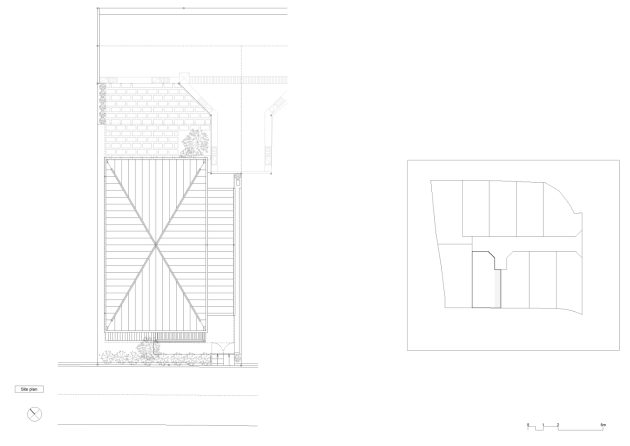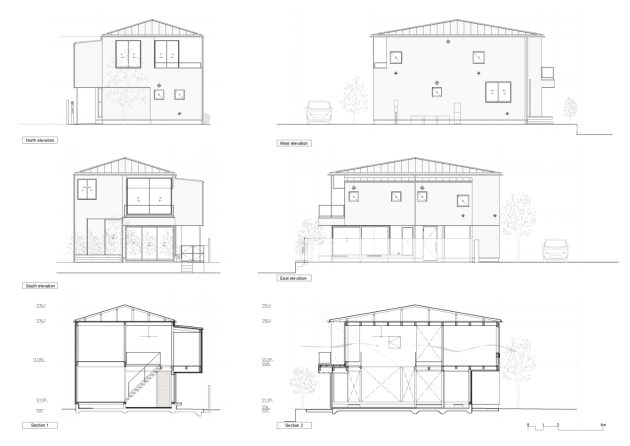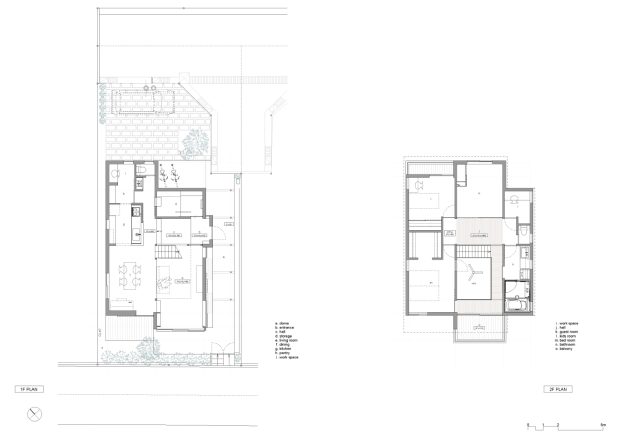project: Duma House
Architects: KiKi ARCHi + TAKiBI
Site: Kanagawa, Japan
region: 1,776 SF
year: 2021
photos by: Koji Fuji
Duma house designed by KiKi ARCHi + TAKiBI
“DOMA” is a form of space in traditional Japanese architecture. It is usually connected to the exterior of the house and is lower than the rest of the interior space. In the past, the “DOMA” could be used to place agricultural implements, and even used as a small workplace by craftsmen. In modern apartment buildings, the “DOMA” has been changed to an entry porch. The new residential project in Kamakura designed by KiKi ARCHi and TAKiBI explores the “DOMA” form in the contemporary home and extends through a specific design language, expressing its relationship with nature, city and living.
Life is always changing by some simple and complex factors, even for the owner of this house. With deep reflection during the pandemic, he decides to move away from the city with his family, to live like a “kid” again. Then Kamakura, an hour’s drive from Tokyo, with its stunning coastline, history and longing for fun and freedom, became their destination. And this new chapter of life will be carried by a beautiful place – DOMA House.
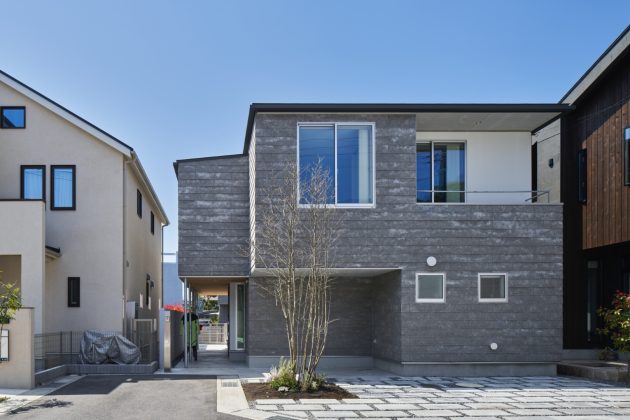
The house is located in a quiet alley close to the sea between two streets with a difference in height. While surveying the site, sea breezes from the south inspired the architects to create an “interactive home” that could interact with the streets, the neighborhood, and nature. It should not be completely closed or independent, but constantly open from the inside out, showing a flowing sense. As a result, the traditional concept of “DOMA” was evaluated and developed by designers and created more opportunities for living.
In order to satisfy the family’s living life, the first floor is set as an open activity area, including patio, semi-outdoor corridor, living room, dining room and kitchen, which is also to maximize the concept of “DOMA” extending from outside to inside. On the second floor, the bedrooms and bathrooms are arranged on the basis of a circular line, and the central void structure brings more sunlight and ventilation into the house. The height difference between the steps and the ceilings also makes the whole house produce a special, more interesting and layered sequence.
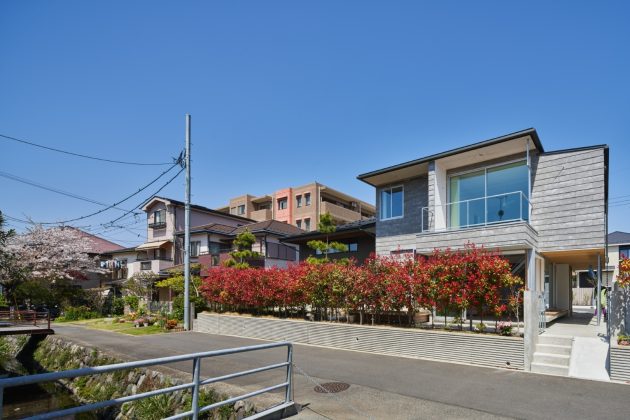
Most cost effective, the house is built using a combination of concrete foundation and traditional Japanese wood structure, built by experienced craftsmen who numbered and combined all materials to complete the main structure in 2 days. The appearance of the entire building presents a simple and modern taste. The facade is covered with a gray cement board that looks like natural stone with a beautiful texture. The roof, with its clever double eaves, has kept the traditional ‘herringbone’ shape hidden from view and provided an interesting contrast to the surrounding homes.
A large number of wooden elements are used in the interior space. For example, the living room is furnished with skin-friendly cork floor that can adjust the temperature, and the second floor is laid with wooden grilles as the floor, and a large area of flat sliding wooden doors is installed, creating a warm and rustic feeling. . In addition, to enhance the structure, some structural elements are presented in a minimalist way, such as FRP lattice screen, cross steel lines, which are unified under white, more decorative, and modern. These details also create some “geometric gaps” in the space, which allow light and wind to flow through, active in every corner of the house.
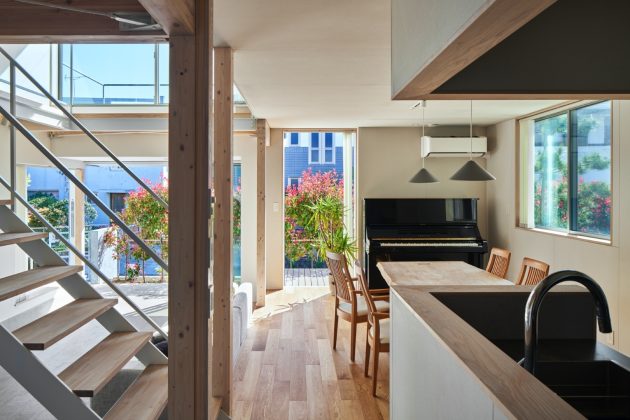
“Exploration” is the proposal the designer left to the family: “DOMA House” opens a new paradigm of neighborhood relations and coexistence. A ladder without guardrails can help their 7-year-old learn body judgment and note perception. Life priorities change, and each family member finds new pleasures. The child made new friends, and they played together in a semi-outdoor space called a “shortcut”. The host has begun to take surfing lessons, and it seems that the hostess often reads and does yoga in the living room. This house brings a lot of fun and vitality to life and the neighborhood, allowing more people to open part of their home to neighbors and the city. Not long ago, another neighbor planned to build a new lane where the road connects, welcoming people to visit whenever possible.
– Project description and images provided by Sideview
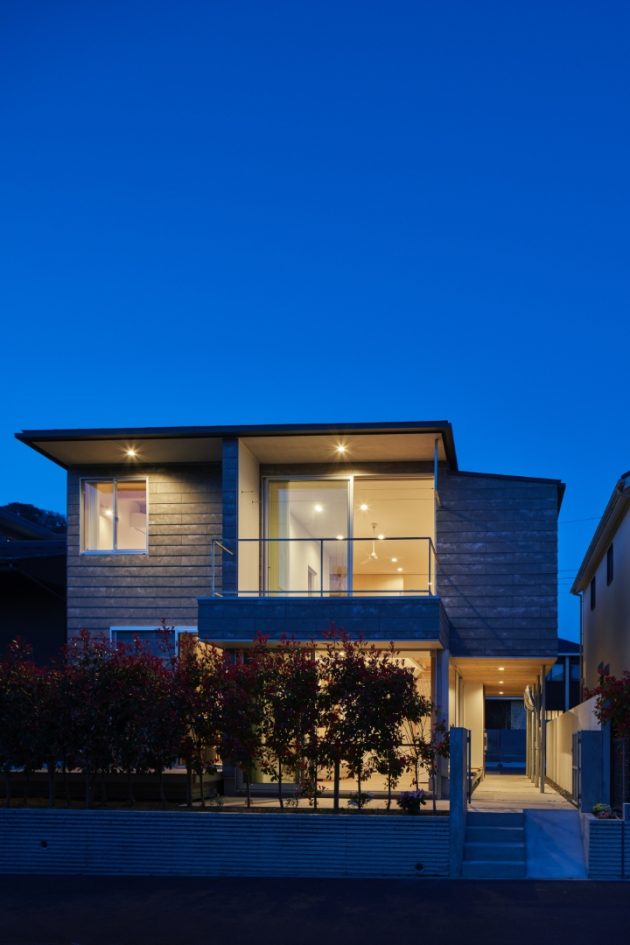
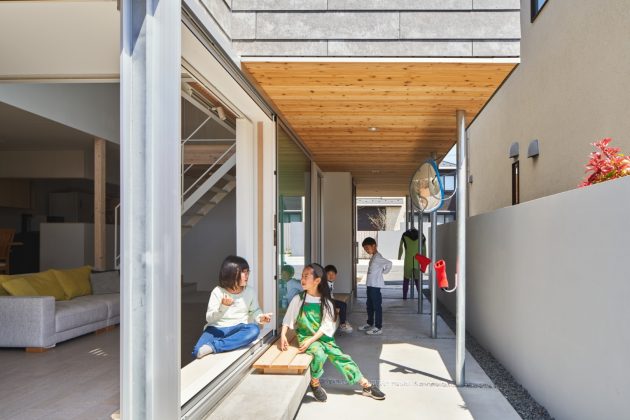
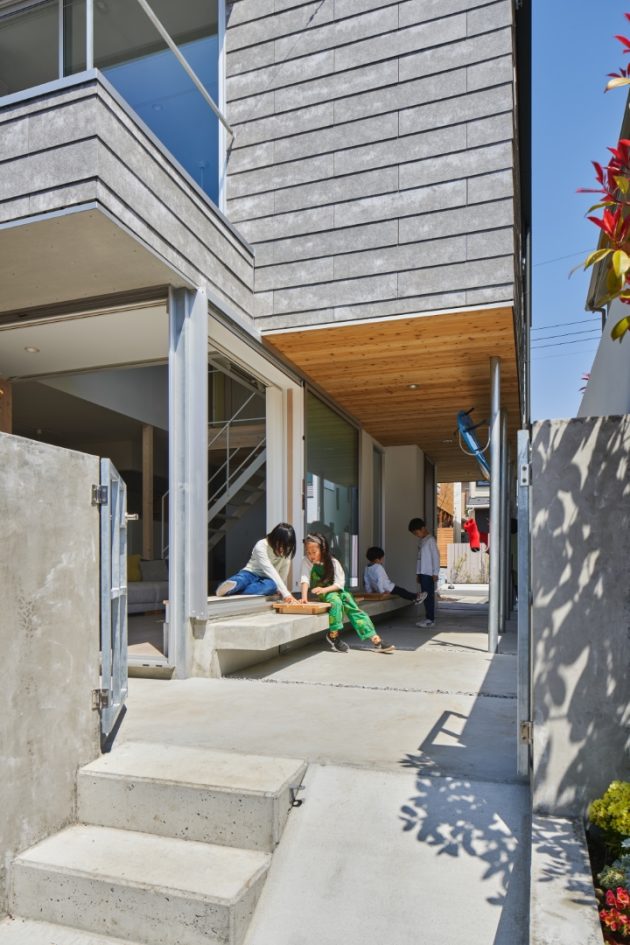
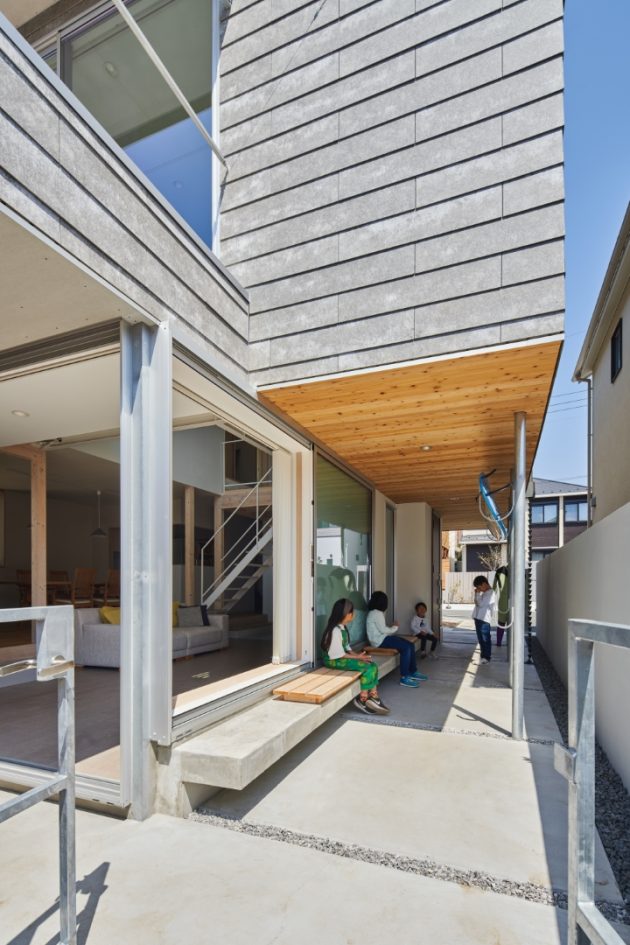
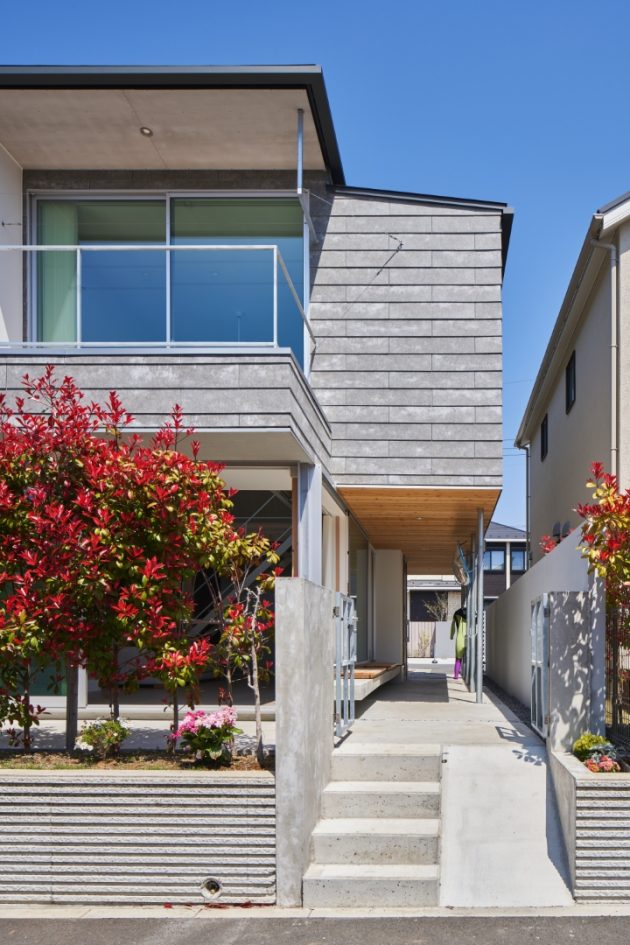
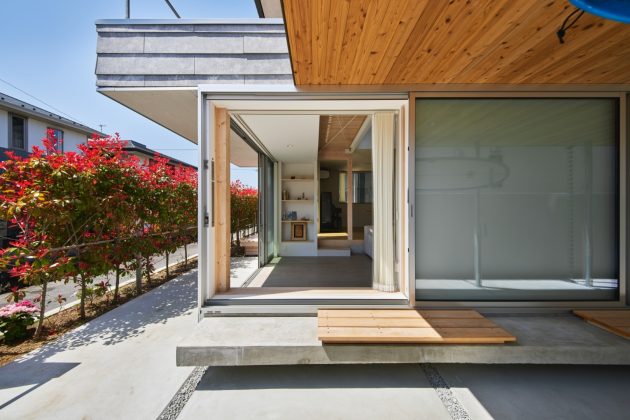
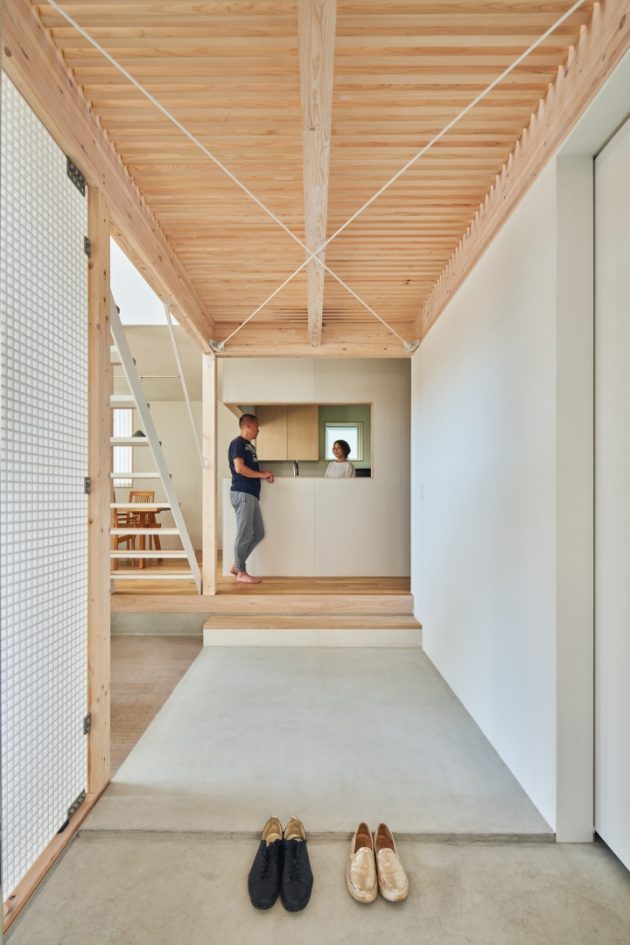
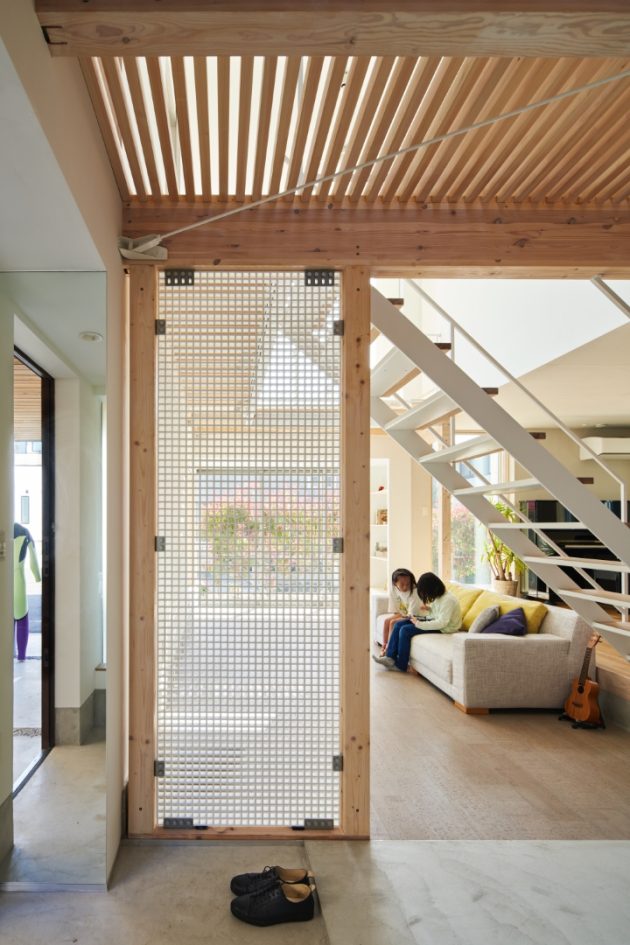
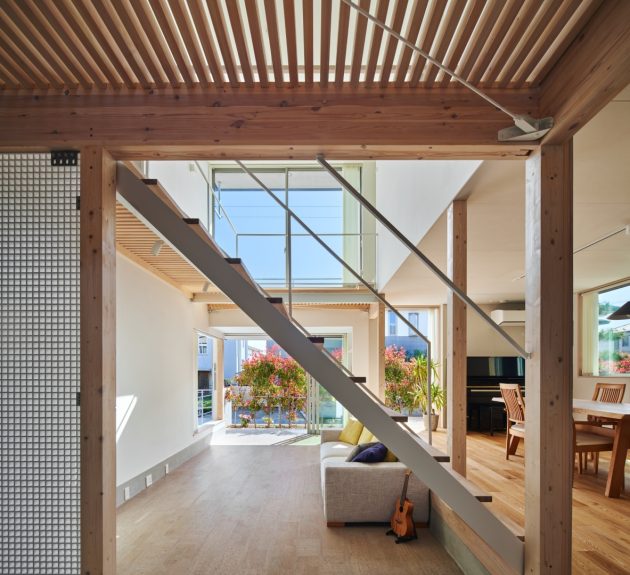
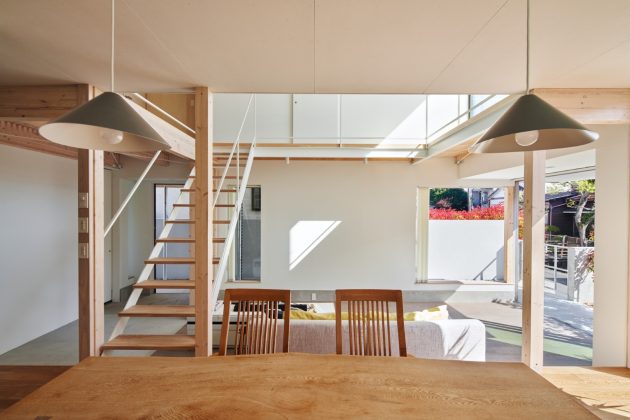
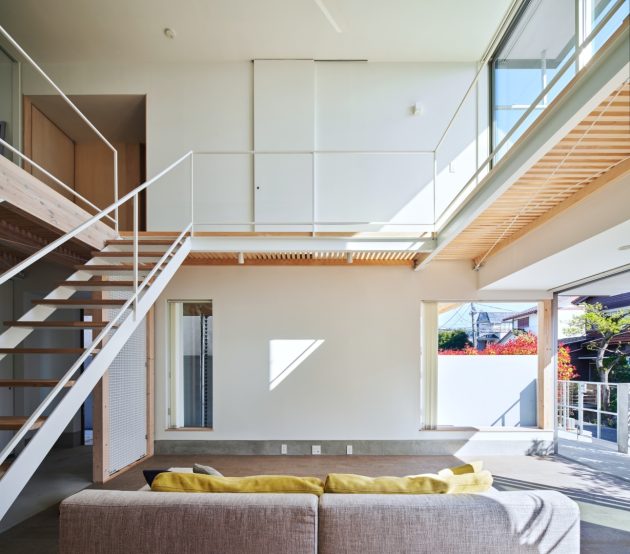
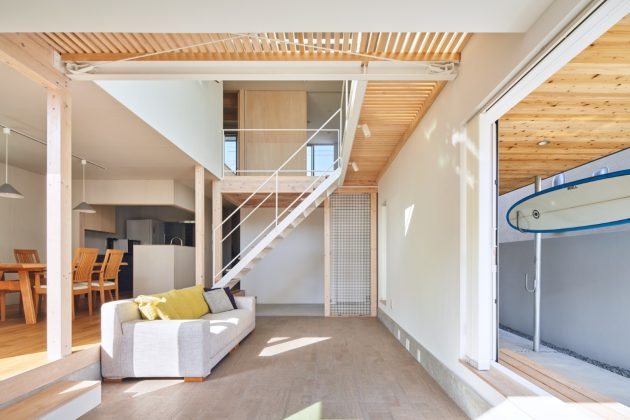
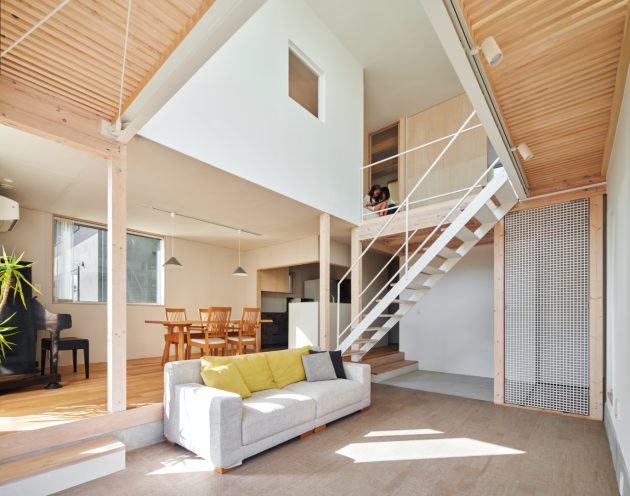
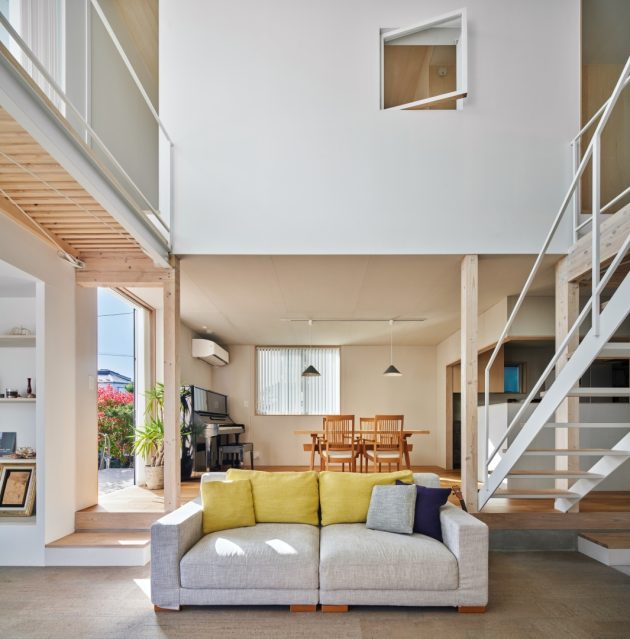
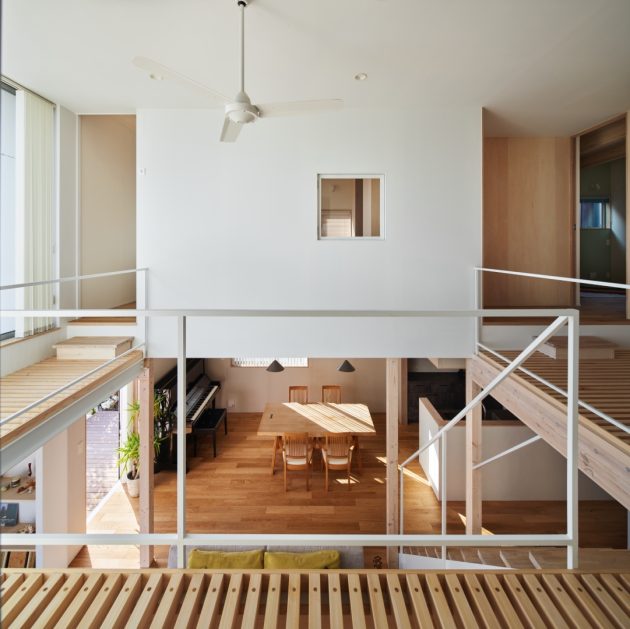
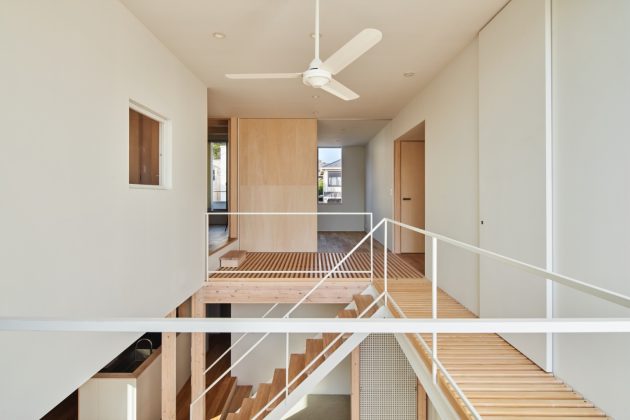
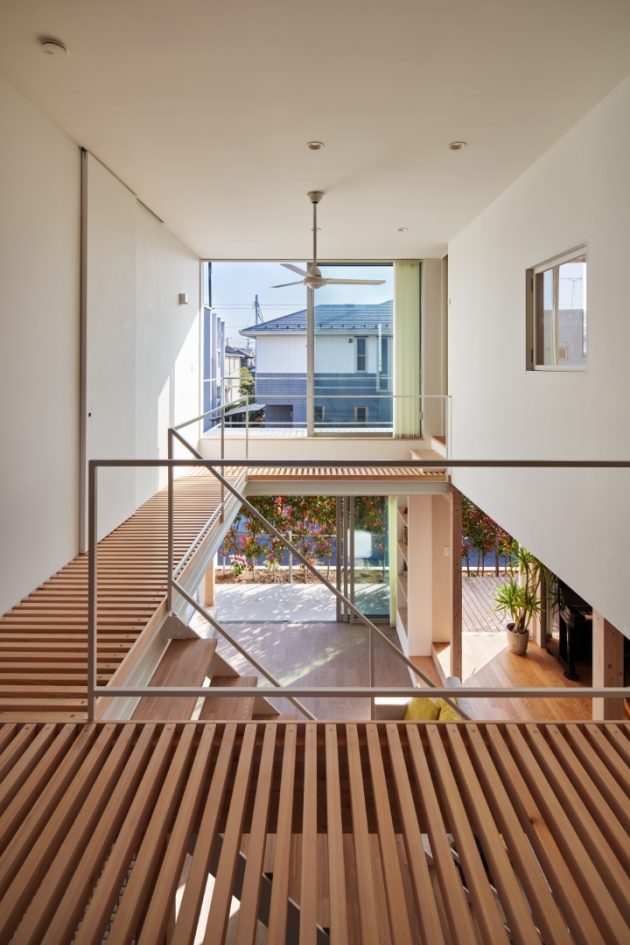
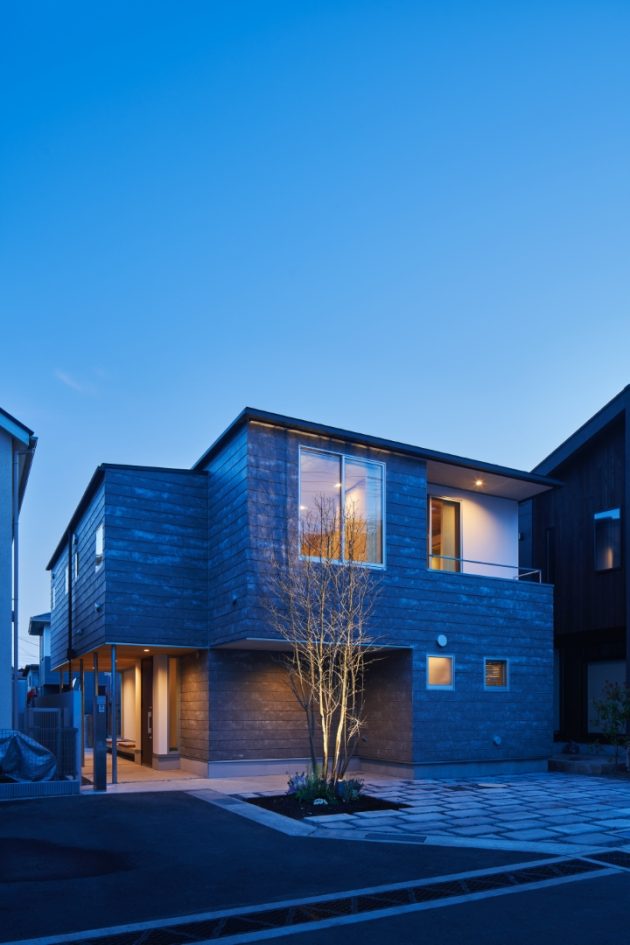
plans
